MP Board Solutions for Class 9 Geography Chapter 4 – Climate
MP Board Solutions for Class 9 Geography Chapter 4 – Climate are essential for understanding weather and climate patterns in the MPBSE curriculum. These well-structured answers help students grasp topics like Indian monsoon, factors affecting climate, seasons, and climatic regions. Designed as per the latest syllabus, these solutions strengthen conceptual clarity and improve exam preparation. Ideal for revision and practice, they encourage scientific reasoning and geographic understanding, making them a valuable study tool for scoring well in Class 9 Social Science exams.
MP Board Solutions For Class 9 Geography – Climate – Exercise Images
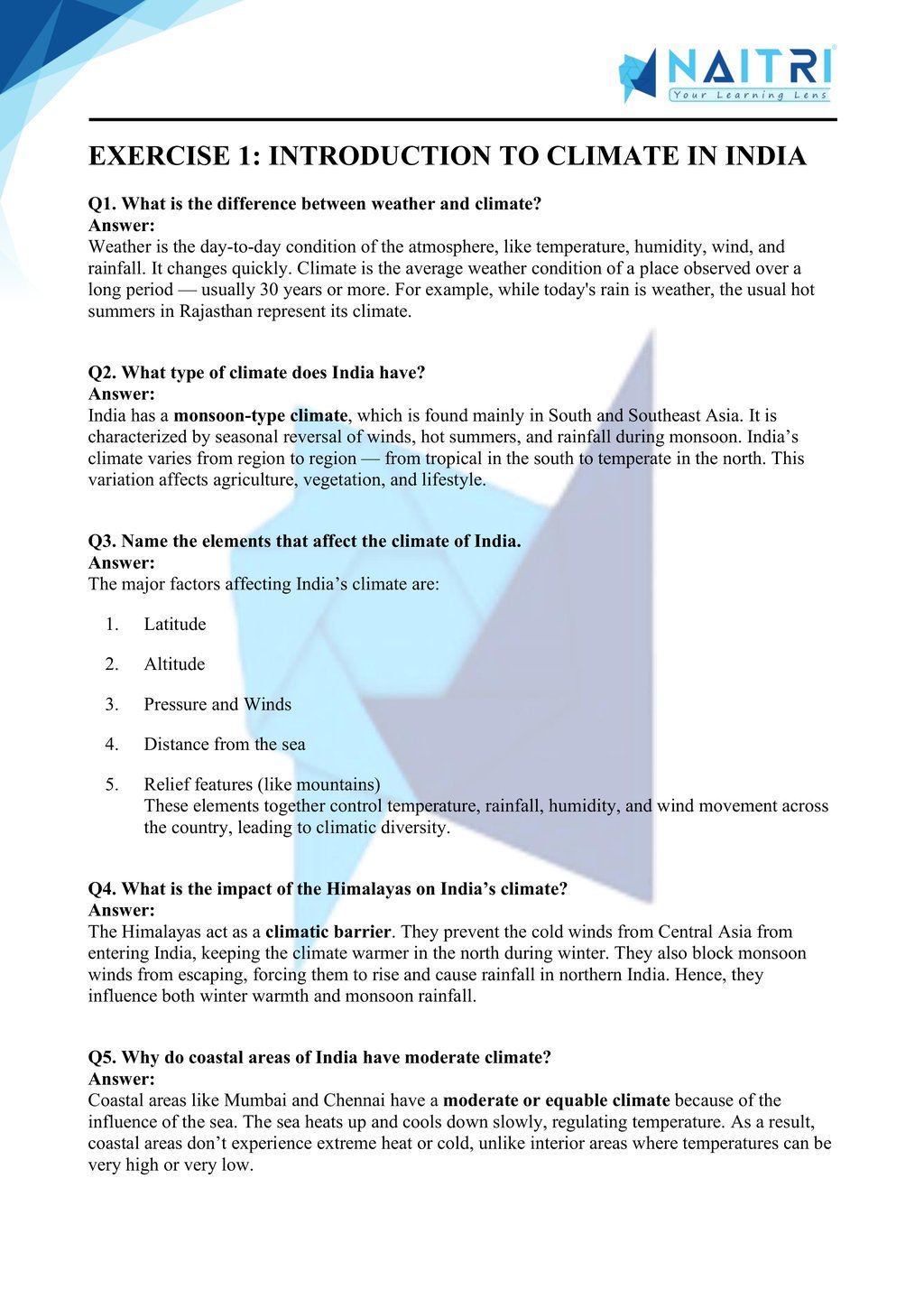
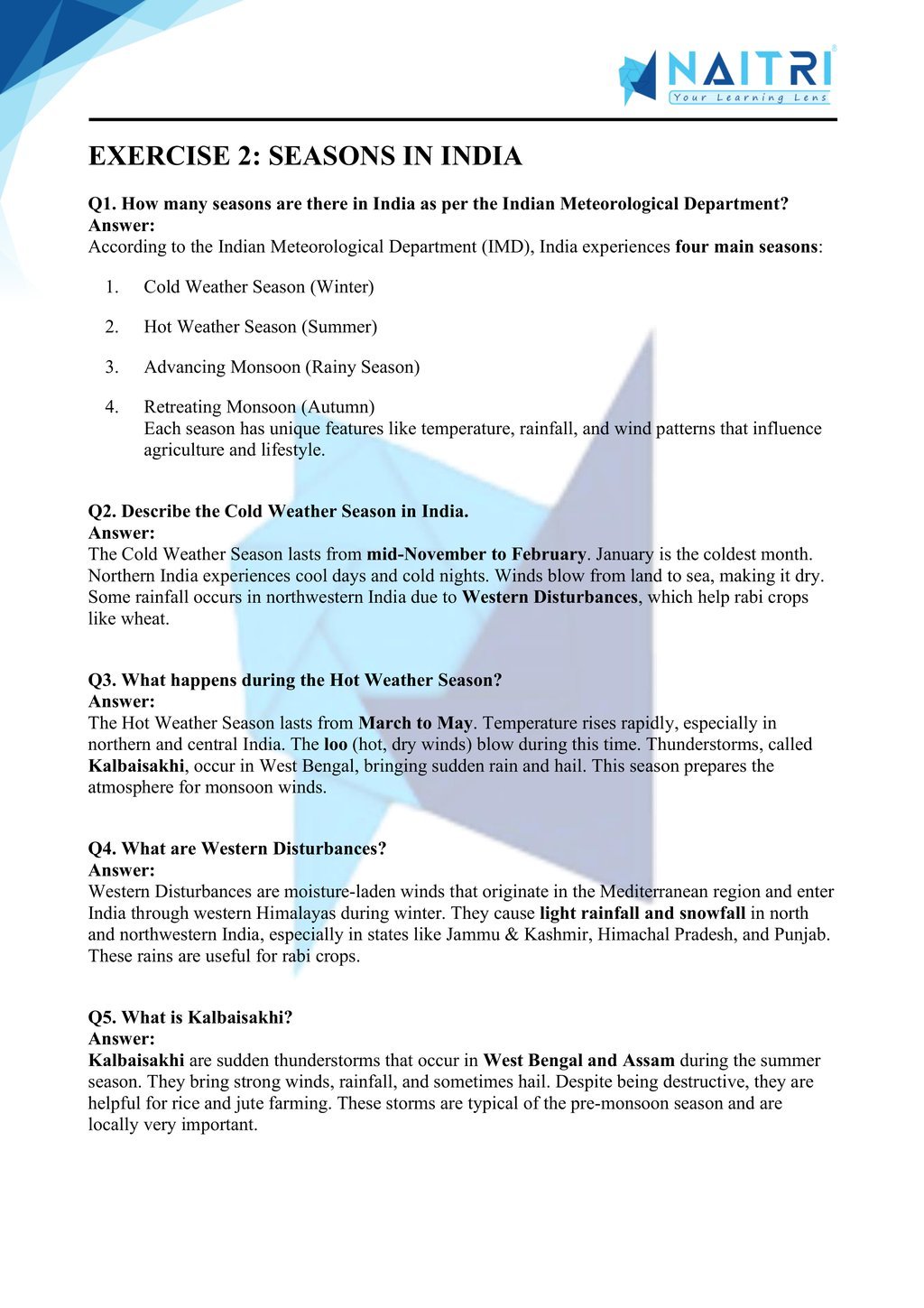
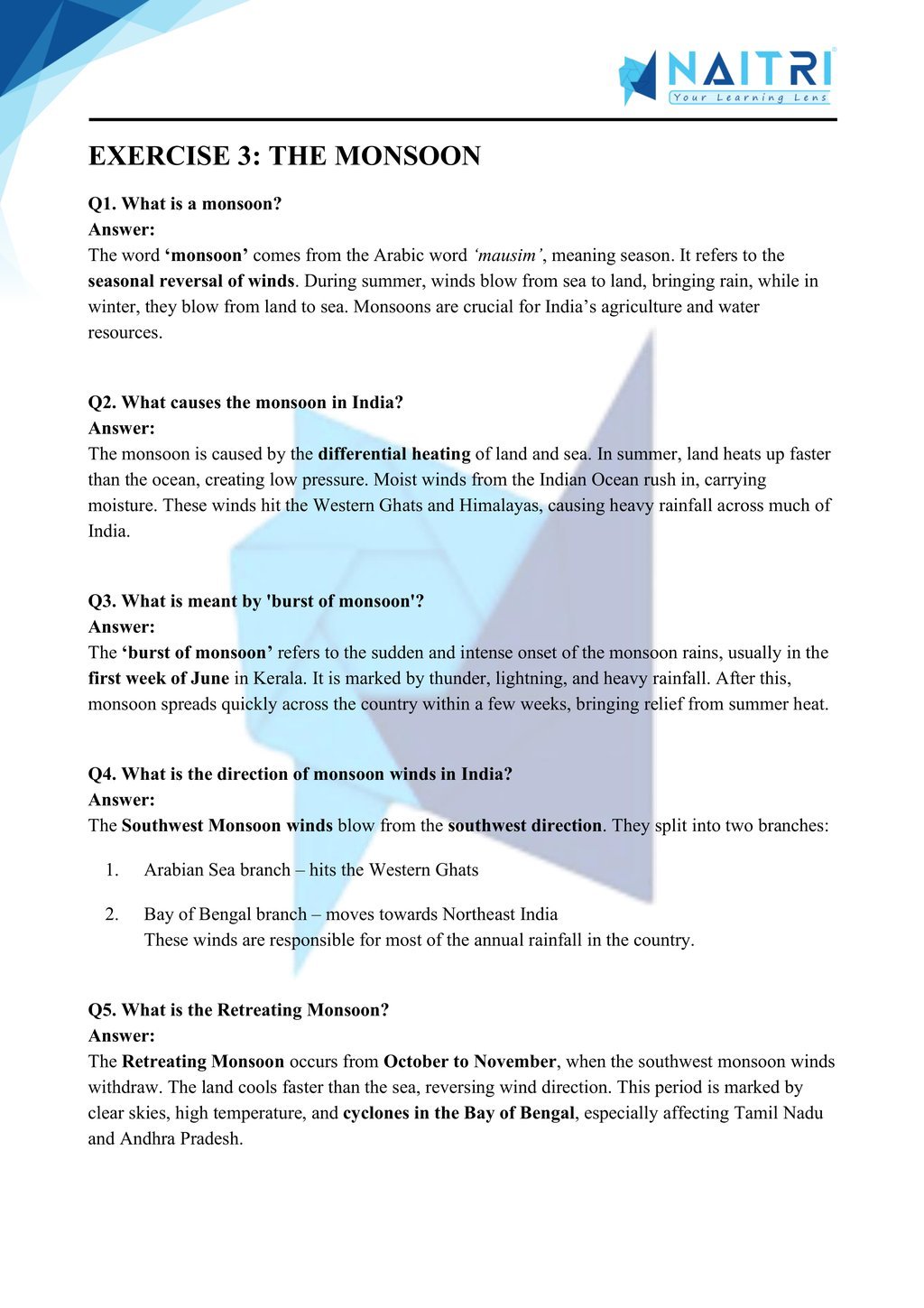
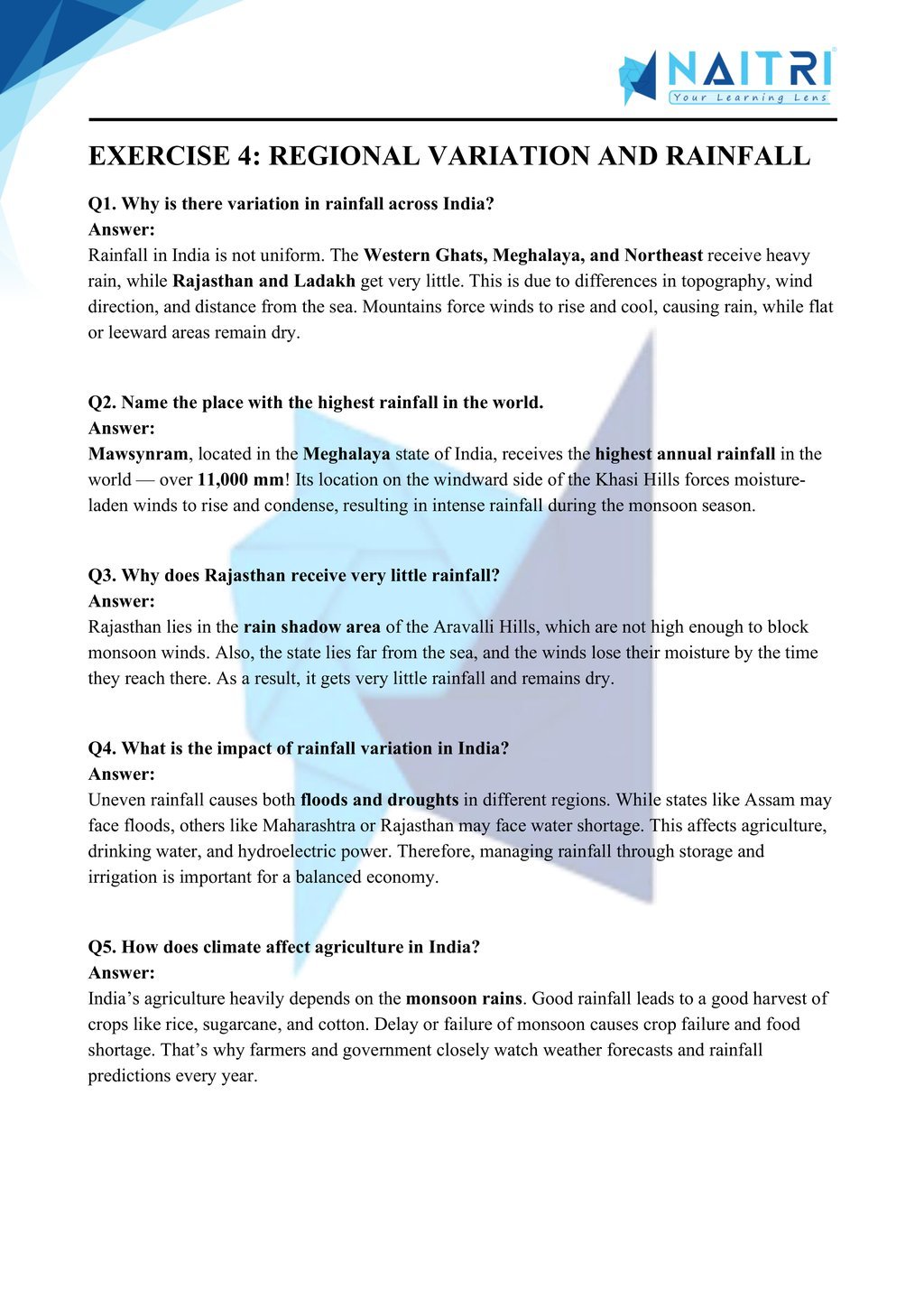
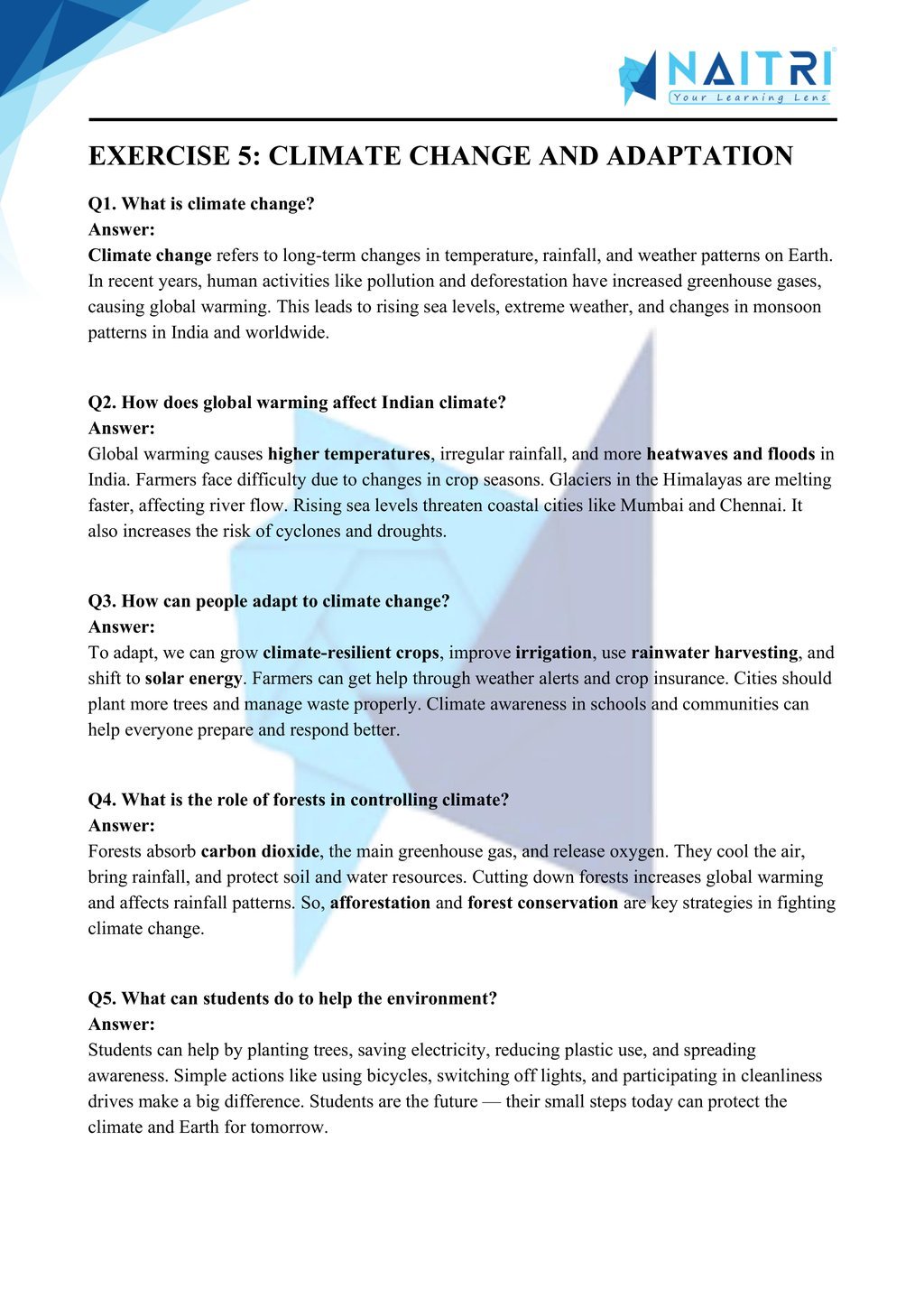
Experience Geography Like Never Before – With AR!
Understanding Climate is now more exciting and immersive! With the NAITRI App, you can explore complex geography concepts through Augmented Reality (AR). Watch monsoons move, wind patterns shift, and temperature zones change — right in front of you. Our AR-powered lessons make learning interactive, 3D, and fun, helping you retain concepts better and enjoy every topic.



Visualize . Interact . Understand . The future of learning is here
Climate – Important Questions with Answers
1. What is climate? How is it different from weather?
Answer: Climate is the average weather condition of a place over a long period (about 30 years), while weather represents the day-to-day atmospheric conditions like temperature, rainfall, and humidity.
2. What are the major controls of climate?
Answer: Major controls of climate include latitude, altitude, pressure and winds, distance from the sea, ocean currents, and relief features, which together influence a region’s temperature and precipitation.
3. How does latitude affect the climate of a place?
Answer: Latitude determines the angle of the sun’s rays. Places near the equator receive direct sunlight and are warmer, while those near the poles receive slanting rays and are colder.
4. What is the role of altitude in affecting temperature?
Answer: As altitude increases, temperature decreases. That’s why hill stations like Shimla are cooler than nearby plains, even though they lie at the same latitude.
5. How does distance from the sea influence climate?
Answer: Areas near the sea have moderate climates due to the sea’s cooling and warming effect, while inland areas have extreme climates, with hot summers and cold winters.
6. What is the Indian monsoon?
Answer: The Indian monsoon is a seasonal wind pattern that brings heavy rainfall to most parts of India during June to September, essential for agriculture and water supply.
7. Why is the monsoon called a unifying bond?
Answer: The monsoon affects the entire country, linking regions culturally and economically. It supports agriculture, festivals, and the livelihood of millions, making it a unifying climatic force.
8. Name the four main seasons of India.
Answer: The four seasons are:
Cold Weather Season (Winter) – December to February
Hot Weather Season (Summer) – March to May
Southwest Monsoon Season – June to September
Retreating Monsoon Season – October to November
9. What are the features of the hot weather season?
Answer: During this season, temperatures rise sharply, hot and dry winds called loo blow in northern India, and localized thunderstorms like Kalbaisakhi occur in eastern India.
10. What causes the southwest monsoon?
Answer: The differential heating of land and sea in summer creates a low-pressure area over India. Moist winds from the Indian Ocean rush in to fill this low pressure, causing monsoon rains.
11. How do the Western Ghats affect rainfall?
Answer: The Western Ghats force the southwest monsoon winds to rise, causing orographic rainfall on the windward side, while the leeward side receives less rain (rain shadow area).
12. What is the retreating monsoon?
Answer: After September, the southwest monsoon begins to withdraw, causing the retreating monsoon. During this period, October heat and cyclones are common in eastern coastal areas.
13. Why does Tamil Nadu receive winter rainfall?
Answer: Tamil Nadu receives rainfall in winter from the northeast monsoon winds, which pick up moisture from the Bay of Bengal while returning and cause rainfall in the southeastern region.
14. What are western disturbances?
Answer: Western disturbances are cyclonic storms originating from the Mediterranean Sea that bring winter rain and snow to northwestern India, helping rabi crops like wheat.
15. What is the importance of the monsoon for Indian agriculture?
Answer: Around 60% of Indian agriculture is rain-fed. A good monsoon ensures crop success, food supply, rural employment, and overall economic growth, while poor monsoons lead to droughts and crop failure.
16. How do jet streams influence the Indian monsoon?
Answer: Jet streams, especially subtropical westerly jets and tropical easterly jets, influence the onset and withdrawal of monsoons by altering pressure patterns and directing monsoon winds.
17. What are the characteristics of the cold weather season?
Answer: During this season, temperatures are low, especially in northern India. Winds blow from land to sea, and rainfall is limited to western disturbances in the north.
18. Why does India experience variations in climate?
Answer: India’s vast size, geographical diversity, and location near the equator result in regional climatic variations in temperature, rainfall, humidity, and seasons.
19. What is El Niño and how does it affect Indian monsoon?
Answer: El Niño is the warming of Pacific Ocean waters, which weakens the monsoon winds and often leads to reduced rainfall and drought conditions in India.
20. Define burst of the monsoon.
Answer: The sudden onset of the southwest monsoon with intense rainfall, strong winds, and thunderstorms after a hot and dry summer is known as the burst of the monsoon.
21. What is the impact of uneven monsoon rainfall?
Answer: Uneven rainfall causes floods in some regions and droughts in others, affecting agriculture, food security, water availability, and economic stability in different parts of India.
22. Why is the monsoon considered both a boon and a bane?
Answer: The monsoon is a boon as it supports agriculture and ecosystems, but it can also be a bane due to floods, landslides, and crop loss from excess or delayed rains.
23. Mention two areas with high rainfall and two with low rainfall in India.
Answer: High rainfall: Mawsynram (Meghalaya) and Agumbe (Karnataka).
Low rainfall: Jaisalmer (Rajasthan) and Leh (Ladakh).
24. How do cyclones affect India during the retreating monsoon?
Answer: Cyclones formed in the Bay of Bengal during the retreating monsoon season cause heavy rains, floods, and destruction, particularly in eastern coastal states like Odisha and Andhra Pradesh.
25. How does climate influence the lifestyle and culture of people?
Answer: Climate affects clothing, food habits, architecture, and festivals. For example, people in hot areas wear cotton clothes, while in cold regions they use woollens and build insulated homes.
Climate examines India’s climatic conditions and patterns, including the monsoon system, temperature variations, and seasonal cycles. Students understand the factors affecting India’s climate such as latitude, altitude, and ocean currents. The chapter also discusses the impact of climate on agriculture, water resources, and regional lifestyles. It provides a scientific explanation of the monsoon and prepares students to analyze weather-related challenges.
Download Naitri App
Easy, Visual Learning — Right on Your Phone
Learn with Augmented Reality! The Naitri app makes CBSE and MP Board concepts interactive and fun — even in low-resource settings. Watch lessons, complete homework, take tests, and track progress — all in one place. Anytime. Anywhere.
Available on








